Abstract
Sewage samples dehalogenated 1,9-dichloronane, 1-chloroheptane, and 6-bromohexanoate, but an organism able to use 1,9-dichlorononane as the sole carbon source could not be isolated from these samples. Resting cells of Pseudomonas sp. grown on n-undecane, but not cells grown on glycerol, dehalogenated 1,9-dichlorononane in the presence of chloramphenicol. Resting cells of five other n-undecane-utilizing bacteria cleaved the halogen from dichlorononane and 6-bromohexanoate, and four dehalogenated 1-chloroheptane; however, none of these organisms used 1,9-dichlorononane for growth. By contrast, four benzoate-utilizing bacteria removed bromine from 6-bromohexanoate but had little or no activity on the chlorinated hydrocarbons. Incubation of sewage with 1,9-dichlorononane increased its subsequent capacity to dehalogenate 1,9-dichlorononane and 6-bromohexanoate but not 1-chloroheptane. A soil isolate could dehalogenate several dichloralkanes, three halogenated heptanes, and halogen-containing fatty acids. An enzyme preparation from this bacterium released chloride from 1,9-dichlorononane.
Full text
PDF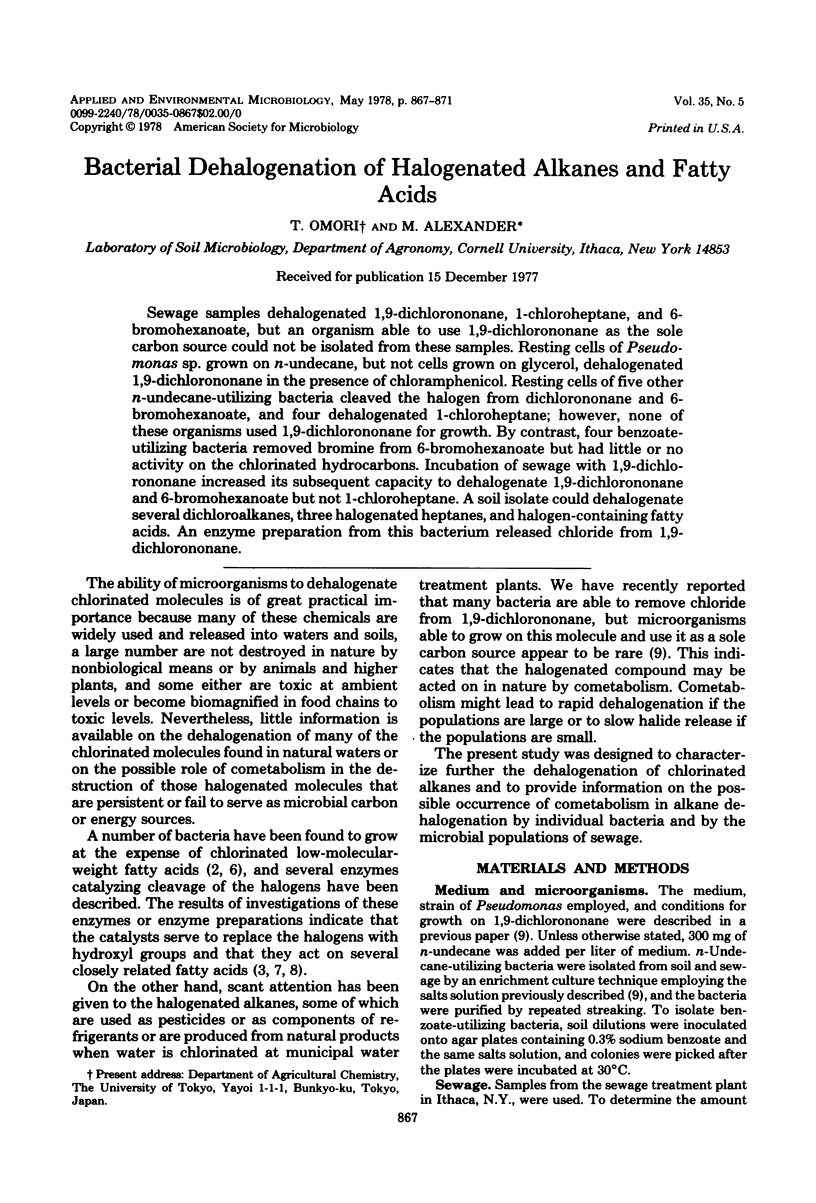
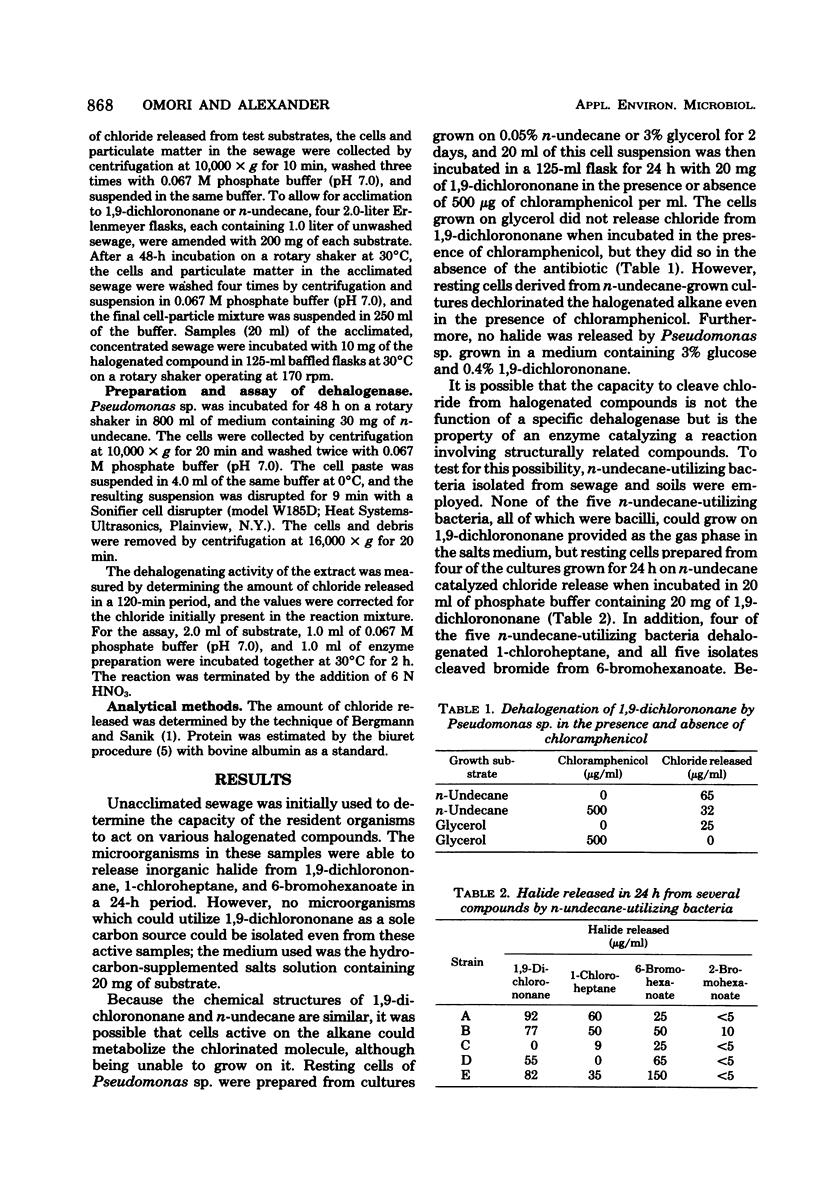
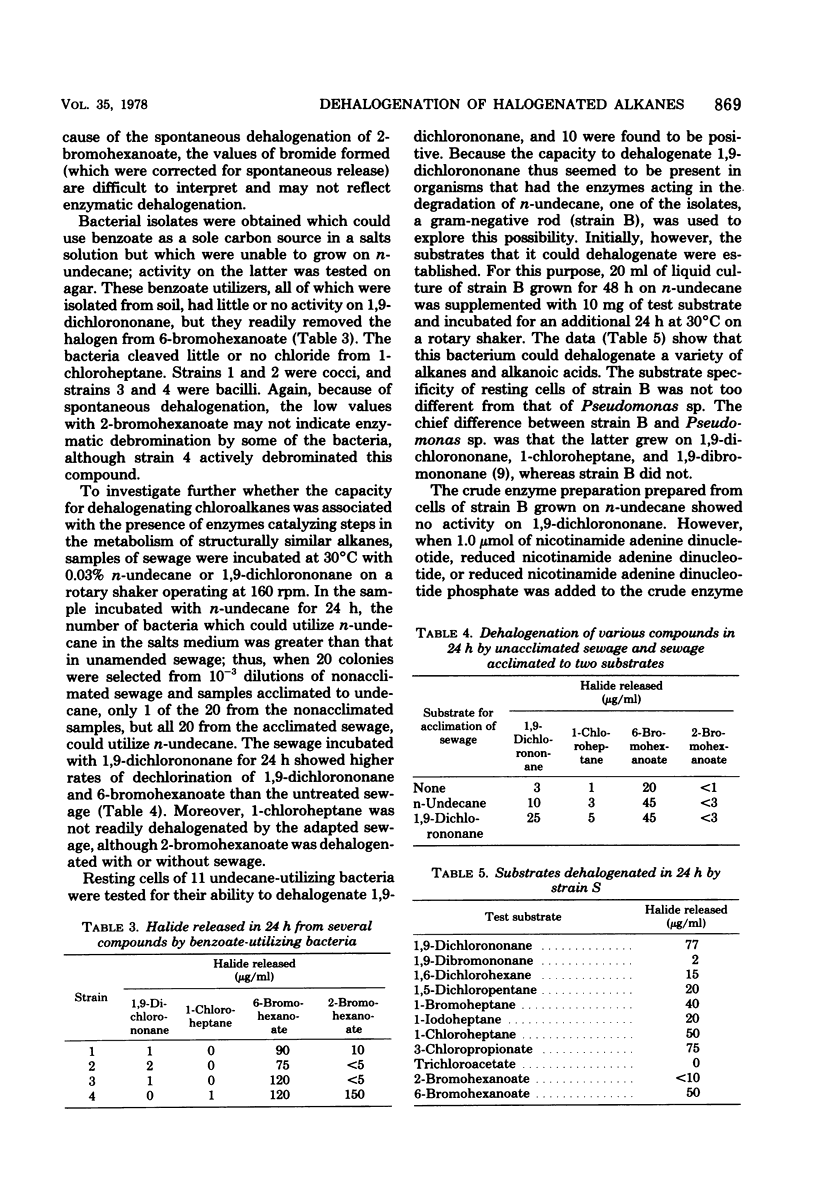
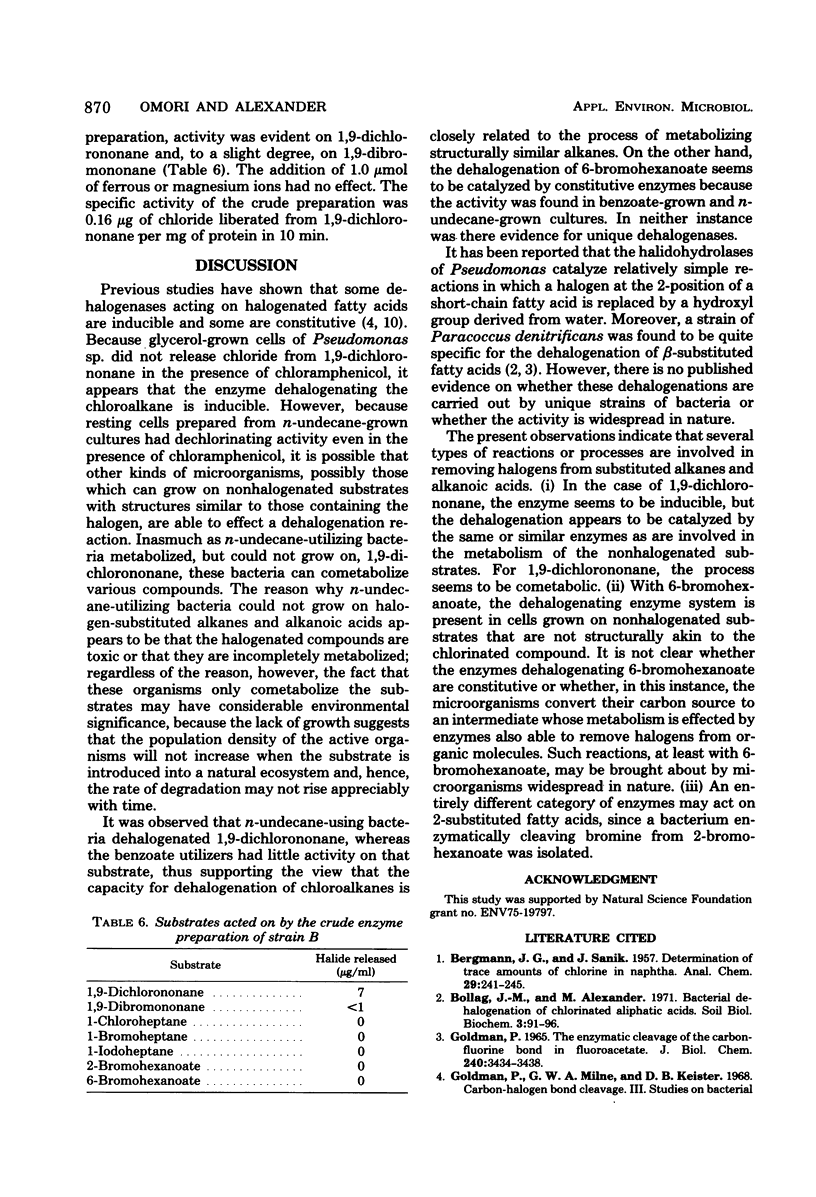
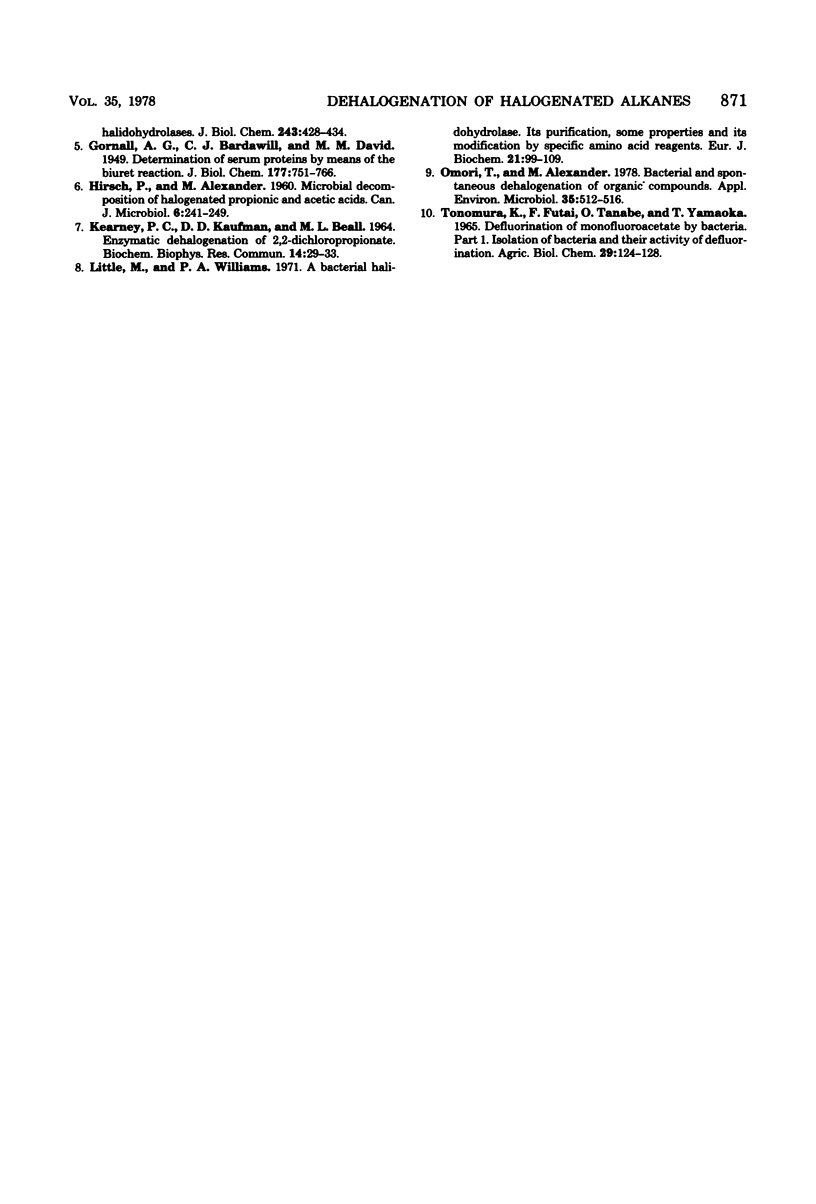
Selected References
These references are in PubMed. This may not be the complete list of references from this article.
- GOLDMAN P. THE ENZYMATIC CLEAVAGE OF THE CARBON-FLUORINE BOND IN FLUOROACETATE. J Biol Chem. 1965 Aug;240:3434–3438. [PubMed] [Google Scholar]
- Goldman P., Milne G. W., Keister D. B. Carbon-halogen bond cleavage. 3. Studies on bacterial halidohrolases. J Biol Chem. 1968 Jan 25;243(2):428–434. [PubMed] [Google Scholar]
- HIRSCH P., ALEXANDER M. Microbial decomposition of halogenated propionic and acetic acids. Can J Microbiol. 1960 Jun;6:241–249. doi: 10.1139/m60-028. [DOI] [PubMed] [Google Scholar]
- Kearney P. C., Kaufman D. D., Beall M. L. Enzymatic dehalogenation of 2,2-dichloropropionate. Biochem Biophys Res Commun. 1964;14:29–33. doi: 10.1016/0006-291x(63)90205-5. [DOI] [PubMed] [Google Scholar]
- Little M., Williams P. A. A bacterial halidohydrolase. Its purification, some properties and its modification by specific amino acid reagents. Eur J Biochem. 1971 Jul 15;21(1):99–109. doi: 10.1111/j.1432-1033.1971.tb01445.x. [DOI] [PubMed] [Google Scholar]
- Omori T., Alexander M. Bacterial and spontaneous dehalogenation of organic compounds. Appl Environ Microbiol. 1978 Mar;35(3):512–516. doi: 10.1128/aem.35.3.512-516.1978. [DOI] [PMC free article] [PubMed] [Google Scholar]


